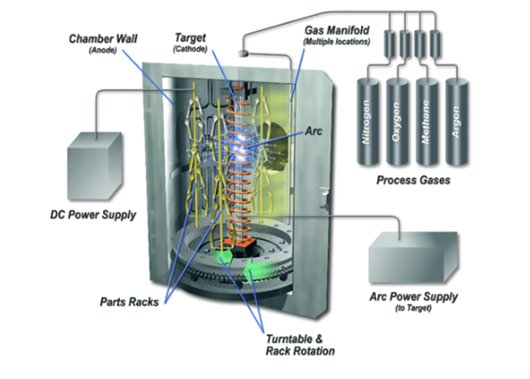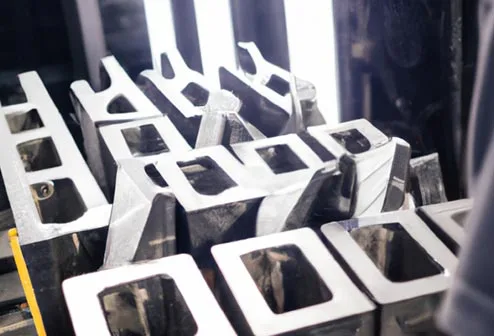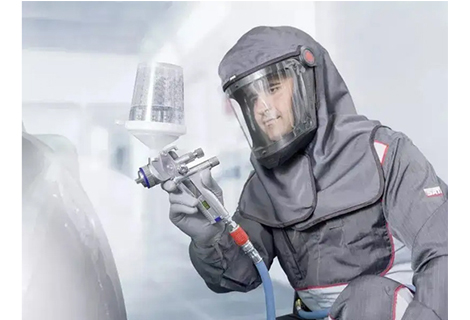CNC metal machining is an essential part that can ensure the accuracy of parts and machining efficiency in modern industrial production and industrial manufacturing. With the development of technology in recent years, a lot of new scientific technologies will be applied in advanced numerical control machines to meet our higher demand for products and processing equipment. Now let's dive into the common CNC metal machining technology and application fields.
Aluminium, the most commonly used metal material, features good heat dissipation, low density and soft texture. In general, it can not be used alone but is alloyed with other metals, such as common aluminum magnesium alloy. The commonly used aluminum magnesium alloy identifiers are 5083 aluminium alloy, 6061 aluminium alloy, 7075 aluminium alloy, etc.
The cooling fluid with high heat dissipation performance is often applied in the cutting aspect of aluminum alloy, which can ensure the heat dissipation performance, the smooth finish of the product, and the smoothness of the cutting process. At the same time, we need a relatively high rotation rate that can’t be less than 2000 rpm according to the size of your tools and workpieces to make the aluminum surface finish good enough. The smaller the outside diameter of the tool and workpiece, the higher the speed it needs. Hence, in order to improve processing efficiency, suppliers will choose to use high-speed machine tools to process, the speed of the high-speed machine can reach an amazing 20000 rpm enhancing the processing efficiency. The higher speed can make the aluminum chip more broken, and it will not make the aluminum chip too long and cause the surface scratch.
When processing aluminum alloy, we will generally choose a sharper white steel knife or special coating tool. Because the texture of aluminum is soft, so we only need to consider its sharpness to meet our production needs.
We need to clean the residual waste liquid on the product surface with clean water in time after completing processing, then we must use an air gun or other equipment to clean water stains on the product surface. The reason why we do it is to prevent aluminum from contact with water and air, resulting in product discoloration and even affecting performance under the Oxidation reaction.
If some products need to achieve the mirror effect, they will be polished to meet customers’ needs. Mirror polish allows the product to achieve a surface finish of Ra0.1, just like the mirror we use, which can clearly reflect the image.
For products without polishing, the metal surface treatment processes is also carried out on the product after processing, including sandblasting, oxidizing, coloring, etc. That can add a protective layer to the product's surface and prevent oxidation during use.

Applications of Aluminium:
1. Construction industry: building materials used in aluminum alloy doors and windows.
2. Electronics industry: heat sinks, electric conductors, etc. in electronic products.
3. Industrial manufacturing: construction machinery in the relevant parts.
4. Daily life: pots and pans and decorations.
Copper is a kind of metal with good electrical and thermal conductivity. It has a low melting point, good plasticity and machinability. Common copper includes pure copper (electrolytic copper), brass, bronze, red copper, and so on. In CNC daily processing, brass and red copper are more. The commonly used brass in China: H59, H62. Especially, the Red Copper T2 is most commonly used.
Because the processing methods of brass and red copper are different, so we will introduce the processing technology of these two materials and their application fieids.

Brass can produce a lot of heat in CNC processing, so it needs to use enough cutting fluid to reduce the cutting temperature, tool wear, workpiece surface discoloration and other problems in processing. Brass material is relatively soft and easy to deform, which needs to be held stably when processed. Choose the appropriate fixtures and clamping modes to avoid vibration and deformation in processing. The same process also needs a high speed to ensure the quality of the product’s surface. Here's the fact that high cutting speed will lead to excessive tool wear or workpiece surface quality decline, so processing speed is generally controlled at 2500-5000 rpm.
Applications of Brass:
1. Electronic and electrical: wires, cables, sockets, terminals and other components.
2. Pipes and fittings: brass corrosion resistance is good, commonly used in the manufacture of water pipes, air conditioning pipes, gas pipelines and other pipe system fittings and connectors.
3. Architectural decoration: Brass has a good processing and decorative effect and is often used in the manufacture of door and window accessories, handrails, decorative strips, lamps and lanterns.
4. Mechanical engineering: Brass has good machining performance and wear resistance, which is commonly used in manufacturing bearings, dimensions, valves, hydraulic components and other mechanical equipment parts.
5. Artworks and crafts: the appearance and texture of brass are suitable for the production of various works of art and crafts, such as sculpture, contemporary, four Treasures of the study, etc.
Here comes the processing technology of red copper. Red copper is also called red copper, whose texture is very soft and sticky. In CNC processing, the cutting parameters need to be set strictly in order to ensure the normal processing of products. The processing heat of red copper is higher than brass, so it’s important to control the cutting fluid and the processing feed. Usually, we will choose a more moderate speed (1500-2500 rotations), cutting edge(1-3mm), reciprocating processing and letting copper chips off to avoid the damage of products and cutting tools caused by scrapings when we process red copper.
In order to prevent the oxidation of red copper, so it’s necessary to plate its surface with silver or gold. This will not affect its original conductivity and its service life because of the oxidation reaction.
Applications of Red Copper:
1. Electrical wiring and components: Copper is commonly used for electrical wiring and components such as transformers, switchgear, and circuit breakers because of its excellent electrical conductivity.
2. Pipes and heating systems: Copper is also used in pipes and heating systems because of its corrosion resistance and good thermal conductivity.
3. Industrial Machinery: includes motors, generators, and power transmission systems.
4. Electronics industry: key materials for manufacturing printed circuit boards and integrated circuit frameworks.
5. Art and decoration: It is often used in sculpture, architectural decoration and so on because of its unique metallic luster and plasticity.
Stainless steel is a corrosion-resistant alloy steel, which is usually composed of iron, chromium, nickel and other elements. It has excellent corrosion resistance, good mechanical properties and unrelated surface texture and is widely used in various fields. Common stainless steels: AISI300 series or 400 series stainless steels.
Stainless steel has a certain hardness and rigidity, so in the processing of stainless steel, we usually choose a better lubrication effect of the cutting fluid, so it can increase the endurance of the tool. The selection of tools is mainly about Tungsten steel and alloy blades. When CNC processes stainless steel, the speed should not be too fast, because high speed will lead to premature wear even the damage of the blade. The cutting depth and speed should not be too fast and be adjusted to a suitable cutting parameter according to the products.
After processing, stainless steel’s surface needs to be treated according to the environment and conditions. Commonly used stainless steel surface treatment: polishing, passivation, and so on. Passivation is intended to increase the corrosion resistance of stainless steel so that it can work in harsh environments.

Applications of Stainless Steel:
1. Architecture and decoration: including stair handrails, roofs, etc.
2. Food processing: such as making kitchen utensils, tableware, etc.
3. Medical devices: such as the production of surgical instruments and medical equipment.
4. Chemical and petroleum industries: Due to its excellent corrosion resistance, stainless steel is commonly used in the chemical and petroleum industries for making vessels, pipelines, pump valves, tanks, and other equipment.
5. Energy and environmental protection: such as solar water heating, nuclear power equipment, etc.
If you’re looking for a professional supplier to help you process the metal parts we, Richconn can be your best partner. Richconn is equipped with advanced CNC machine tools and machining equipment to meet the needs of customers for CNC metal machining, which can achieve high precision and high-efficiency machining. It has a team of highly skilled and experienced engineers who can provide customized solutions to different metal processing needs and optimize processing processes to ensure product quality. Besides, it can process a wide range of metals, including aluminum, steel, copper, and alloys, and can process parts and components of different shapes and sizes, to meet the requirements of customers.
As you can see, Richconn strictly implements a quality management system to ensure that every process meets the standard requirements and the product quality is stable and reliable. It focuses on customer communication and cooperation, providing a full range of services and support from project requirements analysis to product delivery to provide timely and efficient support to customers and ensure the customer satisfaction. Richconn provides metal surface treatment types, try to contact for your CNC metal processing projects now↓↓↓
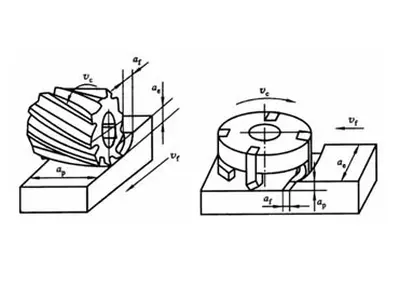 Process Analysis of CNC MachiningAugust 10, 2022CNC machining refers to the processing that the control system issues commands to make the tool perform various movements that meet the requirements, and express the shape and size of the workpiece in...view
Process Analysis of CNC MachiningAugust 10, 2022CNC machining refers to the processing that the control system issues commands to make the tool perform various movements that meet the requirements, and express the shape and size of the workpiece in...view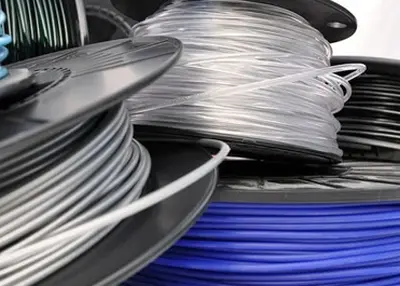 3D Printing Materials GuideOctober 9, 20233D printing, also known as additive manufacturing, has a wide range of materials available for creating objects. The choice of material depends on factors such as the desired properties of the final o...view
3D Printing Materials GuideOctober 9, 20233D printing, also known as additive manufacturing, has a wide range of materials available for creating objects. The choice of material depends on factors such as the desired properties of the final o...view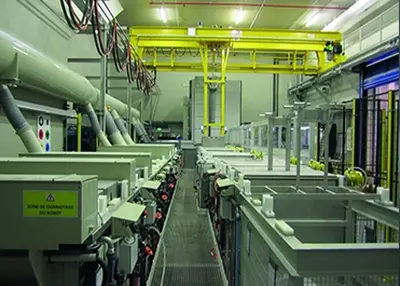 Alodine: A Versatile and Effective Coating for AluminumDecember 5, 2023Alodine is a trade name for a chromate conversion coating that protects aluminum and other metals from corrosion. A chromate conversion coating is a thin layer of chromium compounds that forms on the surface of a metal when it reacts with a chromate solution.view
Alodine: A Versatile and Effective Coating for AluminumDecember 5, 2023Alodine is a trade name for a chromate conversion coating that protects aluminum and other metals from corrosion. A chromate conversion coating is a thin layer of chromium compounds that forms on the surface of a metal when it reacts with a chromate solution.view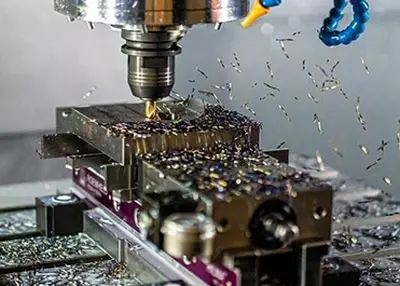 What are the machining processes?November 16, 2023Machining processes are a key manufacturing method used to transform raw materials into desired parts and products. These processes include milling, turning, drilling, grinding, reaming, stamping, forging, injection molding, EDM, heat treatment, welding, stretch molding, powder metallurgy and 3D printing. The following are some common machining processes:view
What are the machining processes?November 16, 2023Machining processes are a key manufacturing method used to transform raw materials into desired parts and products. These processes include milling, turning, drilling, grinding, reaming, stamping, forging, injection molding, EDM, heat treatment, welding, stretch molding, powder metallurgy and 3D printing. The following are some common machining processes:view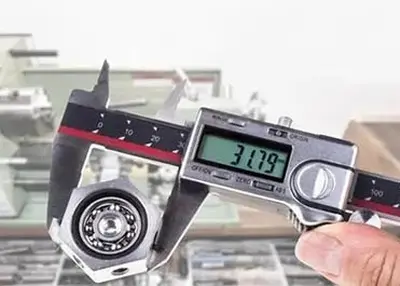 Die Casting Machine: A Detailed ReviewMarch 6, 2024Die casting machines are essential in the manufacturing industry. Let's delve into a detailed review of their key features, benefits, and applications.view
Die Casting Machine: A Detailed ReviewMarch 6, 2024Die casting machines are essential in the manufacturing industry. Let's delve into a detailed review of their key features, benefits, and applications.view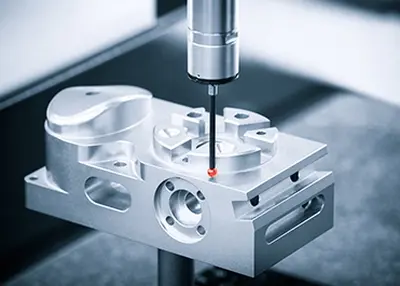 Better CNC Parts Through Fine tuning of TolerancesOctober 13, 2023Tolerances that are too tight can require rework, which in turn drives up costs. If tolerances are too loose, the part may not fit with the mating part. So to optimize your designs, know what tolerances are needed and when: Standard tolerances can improve quality, ensure fast repeatability and reduce manufacturing costs.view
Better CNC Parts Through Fine tuning of TolerancesOctober 13, 2023Tolerances that are too tight can require rework, which in turn drives up costs. If tolerances are too loose, the part may not fit with the mating part. So to optimize your designs, know what tolerances are needed and when: Standard tolerances can improve quality, ensure fast repeatability and reduce manufacturing costs.view
 EN
EN
 ru
ru 

